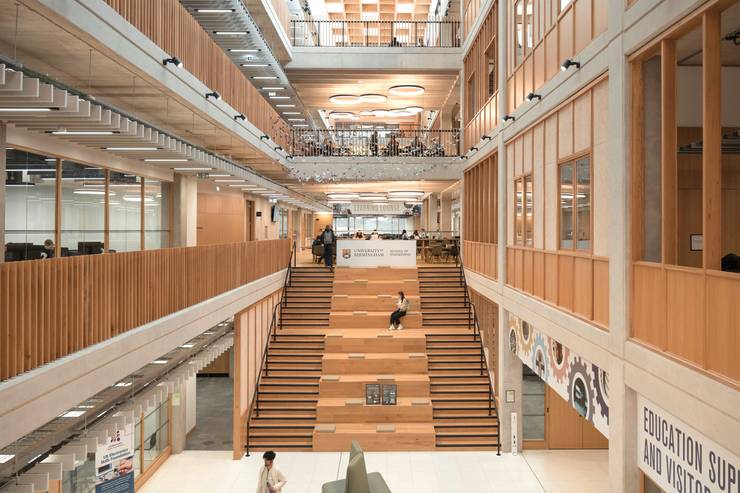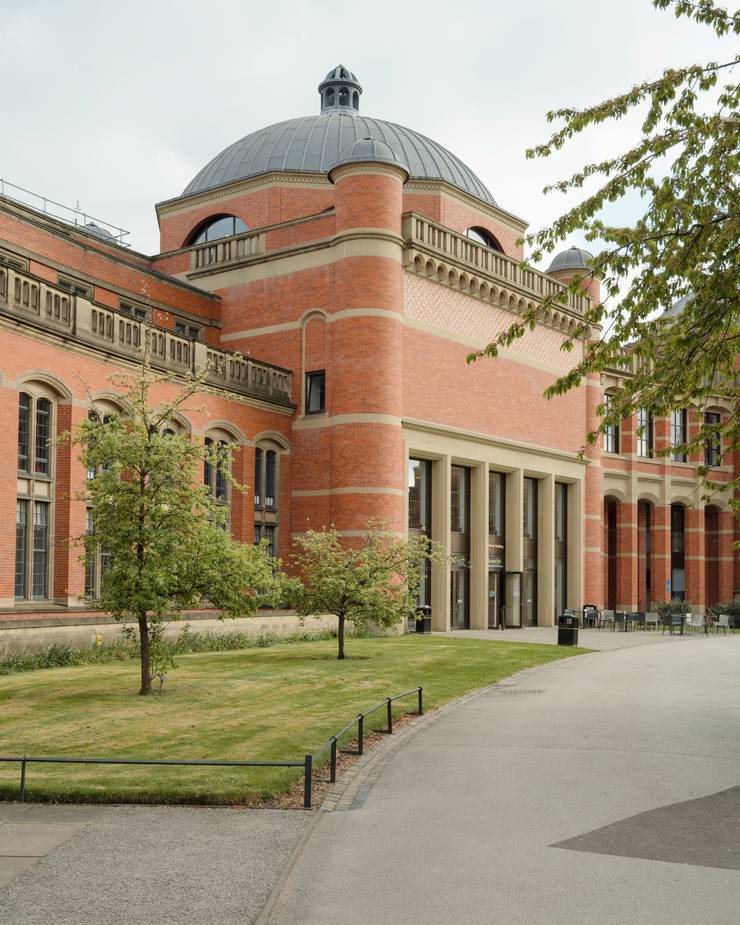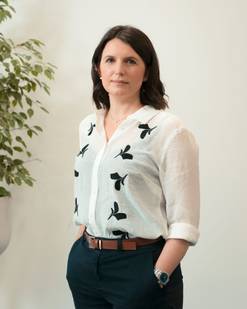Siemens Monocle
Transforming the everyday.
The University of Birmingham is breaking new ground – and bringing the space of education into a new age, with new technologies that redefine our lives and learning.
All over the world, universities embody an ideal: by bringing together diverse groups of people and opinions, the campus is a space for shared learning, discovery and innovation. But the very fabric of universities changed profoundly because of the pandemic. Students, who for centuries have benefitted from the advantages of physical community on campus, were compelled to study and research at home. Passionate faculty members, which thrive on the energy of their students, were instead delegated to explain complex issues to a collection of squares on a screen. And all this at a time when higher-education institutions are in a phase of upheaval, looking for innovative ways of financing, reducing carbon emissions and improving the user experience.

Inside the University of Birmingham’s School of Engineering
These challenges are similar to the ones faced by companies, which were required to send employees home to work. Or cities trying to master the ramifications of urbanisation. Each is looking for value to sustain the future vitality of their institutions and communities. Value that can be found in the adaptability and resilience of infrastructures.
So what does it mean to have “smart” infrastructure? What if the campus buildings communicated as well as the students and staff inside? Buildings that know how much energy is consumed by their occupants and when it peaks. Buildings that share analyses with each other and agree on when to produce, share and divert resources as needed. What if the lab was the campus itself?
The University of Birmingham saw an opportunity to digitally transform the buildings throughout their campuses in the UK and Dubai based on these questions. The university is laying its path forward under the motto of “thriving” rather than “surviving” and has teamed up with Siemens in an effort to create the smartest campus in the world.

The first phase of the project includes the roll out of 23,000 Enlighted IOT sensors
Faye Bowser is head of energy and performance services at Siemens UK and Ireland, and responsible for the collaboration with the University of Birmingham. “Students starting in 2025 will be younger than smart technology,” says Bowser. “They will have different expectations about how interactive a campus should be. Then we have the commitment of the university and Siemens to get to net-zero. And how could the university deliver on its strategy to get from the top 100 to top 50? We could see quite early that there isn’t one technology or solution that could solve these types of challenges.”
As we adapt our physical surroundings to become more flexible, digital technologies, co-operation and vision will pave the way.
Tackling the university’s digital transformation is all about transparency and data. You need digital sensors, analytics technologies, artificial intelligence and an open platform where data can be shared and effectively utilised. Last year the university became one of the first in the world to roll out Internet of Things (IOT) technology at scale, not only in the pursuit of lowering their carbon emissions but to create a “Living Lab”. This is a place where data from the university’s building technologies, infrastructure and energy plants will be used for further innovation, research and development, and culminates in the development of a “digital twin” of the campuses.
A three-dimensional replica of the real-world campuses, their digital twin includes both new and historical buildings and will be responsive to future challenges using Building Information Modelling and the IOT for real-time analysis, monitoring and testing.

Faye Bowser of Siemens UK and Ireland
“We really played to our strengths around digital modelling and digital solution development so we could create a digital twin to experiment with,” says Bowser. “That had all sorts of positive effects on campus infrastructure. During the pandemic, for instance, we were able to challenge how much we need to be on site or how much we could work remotely. As a result of that 12-month period, we were able to co-create solutions with the university.”
The approach that the University of Birmingham has chosen shows a vast spectrum of IOT capabilities ranging from campus analytics, where data is used to better manage flows of people, improve building ventilation or adjust heating. This also includes the development of an online community platform that complements the on-campus experience with a virtual space for open discussions and events.
“We are also looking at open platforms so that students and the academic community can go in and create new algorithms and new apps,” says Bowser. “The projects we’ve agreed to have a 10-year lifespan. You only have to look back on the past 10 years to see how rapidly things change.”
These innovations allow student life to transition safely into a “new normal” and for the campus to become a buzzing, vibrant place. One that underscores the university’s commitment to sustainability and supports an increasing call for universities to have a mission to generate knowledge outside the academic sphere and to make a tangible contribution to social, cultural and economic development.
The University of Birmingham applies technology that already exists. Now it’s a matter of applying and implementing it decisively. The educational establishment is leading the way forward. The smartest campus in the world will hopefully become the nucleus for something bigger. A model for adaptable, resilient and flexible infrastructures all over the world, where people can thrive together sustainably.

